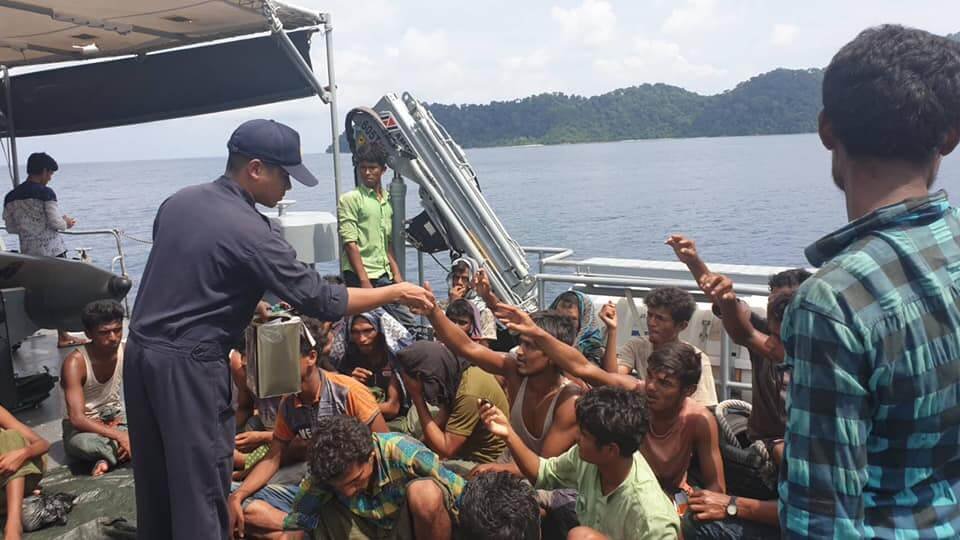By Adeola Ogunnoiki, PACS, University of Manitoba
Date: October 28, 2025
The Push and Pull factors of Sex Trafficking and the Fight to Protect the Rohingya women and girls
When people lose everything; their homes, their country, their legal identity, the line between safety and danger becomes perilously thin. For the Rohingya, life in the world’s largest refugee settlement has become a waiting game between survival and exploitation. Amid the maze of tents and muddy paths, sex trafficking quietly thrives, driven by powerful push and pull forces that prey on desperation and hope in equal measure.
Push Factors: Desperation at the Heart of Displacement
Sex trafficking does not emerge from nowhere; it grows from the cracks of displacement, poverty and inequality. For Rohingya women and children, the first push is statelessness. Without citizenship, they have no legal identity, no right to work, and no protection under the law. This makes them invisible in the eyes of justice, perfect targets for exploitation.
Poverty deepens the wound. In Cox’s Bazar, where nearly one million refugees live, aid is shrinking, and opportunities are scarce. Families struggling to feed their children are more likely to believe promises of jobs or marriage abroad. Traffickers know this — and they exploit it.
Education and awareness are limited. Many girls have never attended school, and without access to information, they cannot recognize the warning signs of trafficking. Gender inequality further isolates them. Early marriage, often seen as a form of protection, can instead expose young girls to forced labor or sexual exploitation under the guise of matrimony.
Even within the camps, insecurity and overcrowding make safety fragile. With poor lighting, inadequate policing, and rising violence, traffickers move easily through the shadows.
Pull Factors: The False Promise of a Better Life
If desperation pushes the Rohingya toward risk, hope pulls them closer to danger. Traffickers use the language of opportunity; jobs in the city, education for children, or marriages offering stability and safety. In a place where dreams are rationed, even the smallest hope can be powerful bait.
Many victims believe they’re being offered legitimate work as domestic helpers or garment workers. Others accept marriage proposals from men abroad, believing they’ll find a new start in Malaysia or the Middle East. Instead, these offers often lead to sexual slavery or forced labor.
The global demand for cheap labor and sexual services fuels this trade, turning Rohingya women and girls into commodities in a shadowy regional market that stretches far beyond the borders of Bangladesh.
The Regional Web: Crime Without Borders
Sex trafficking among the Rohingya is not just a local issue; it’s part of a regional network of organized crime. Traffickers use porous borders between Bangladesh, India, and Myanmar to move victims undetected. In some cases, they coordinate with international smugglers to send women and children by boat to Malaysia, Thailand, or Indonesia.
Bangladesh’s limited law enforcement capacity, combined with corruption and weak border monitoring, allows these networks to flourish. Many traffickers face little consequence, while survivors often lack the resources or legal status to seek justice. What begins in the refugee camps of Cox’s Bazar can end thousands of miles away; in forced prostitution, abusive marriages, or domestic servitude.
Law Enforcement: Fighting With Limited Tools
Bangladeshi police and border guards play a crucial role in confronting trafficking, but they face immense challenges. Understaffed and under-resourced, they struggle to monitor vast refugee settlements and remote border zones. In some cases, corruption or lack of training allows traffickers to slip through.
Recent collaborations between Bangladesh’s Anti-Trafficking Working Group (ATWG), IOM, and UNODC have improved victim identification and data sharing. Training programs now help officers recognize signs of trafficking and support survivors humanely. Still, without stronger laws, cross-border coordination, and resources, law enforcement remains one step behind organized criminal networks.
NGOs and Civil Society: The Lifeline for Survivors
Where governments fall short, NGOs and community organizations step in as lifelines. Groups such as BRAC, UNHCR, and IOM work directly in refugee camps to educate families, identify victims, and provide shelters and psychosocial support.
Community awareness campaigns teach women and girls to spot deceptive job offers or “marriage brokers.” Counselling services and safe spaces offer survivors a chance to heal and rebuild. Local women’s groups also play a vital role in creating support networks; breaking the silence that traffickers rely on.
Civil society organizations advocate for stronger anti-trafficking laws and push governments to uphold international protection standards. They are not just providing aid; they are restoring agency and dignity to people the world has forgotten.
To be continued….
Photo credit: https://www.fortifyrights.org/tha-inv-2019-06-12



